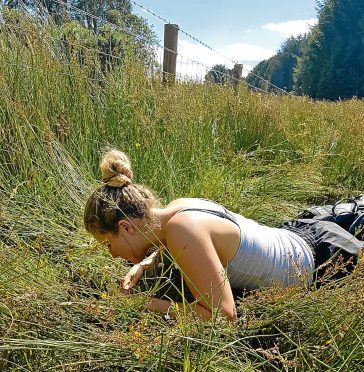Two major liming research projects are under way at the Game and Wildlife Conservation Trust’s (GWCT) Scottish demonstration farm at Auchnerran on Deeside.
Researchers from both the James Hutton Institute (JHI) and the Moredun Research Institute are working on projects looking at the impact of putting lime on grazing paddocks.
The JHI project, which also involves a number of other farms across Scotland, is looking at the effects of liming on soil chemistry, invertebrate biodiversity and sward composition.
The GWCT is particularly interested in assessing how liming affects soil invertebrates as these provide a valuable source of food for wader species.
Meanwhile, the Moredun project is looking at whether or not the number of mud snails – the intermediate host for liver fluke – are affected by liming. GWCT head of Scottish lowland research, Dave Parish, said the projects were particularly relevant because some of the agri-environment scheme options available to producers encouraged boggy and wet ground.
He said some of the resistance to these options can come from livestock farmers perceiving risks from fluke infection that outweigh the benefits the habitats have for wildlife. The studies will assess how great those risks may be. Two fields at Auchnerran will be monitored – half of the area has been limed, and the other half has not received any lime.
Ten sites, each up to one metre radius, have been identified in each field. At each of these sites a 10-minute search for mud snails will be conducted up to once a month between April and October.
The snails will be counted and sent to the Moredun where they will be identified at species level and screened for fluke infection.
The first counts are being done now before the lime is applied to the fields.
“Auchnerran is an ideal location for these projects, not least because we run a 1,200 ewe sheep flock there so fluke is a major concern. And our ongoing work with waders is another area of considerable interest, and whether liming can provide a better environment for their breeding success,” added Mr Parish.
Moredun principal scientist Philip Skuce said: “This collaboration with GWCT and the James Hutton Institute provides a unique opportunity to investigate the actual fluke risk associated with the implementation of agri-environment options and we look forward to working together over the coming weeks and months.”
The projects were funded by the Scottish Government’s Rural and Environment Science and Analytical Services Division.
